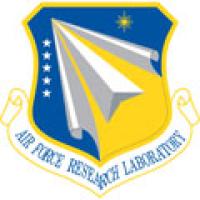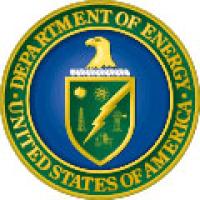Our research is funded by:




LaserNetUS
LaserNetUS is a program established by the department’s Office of Fusion Energy Sciences (FES) to help restore the U.S.'s once-dominant position in high intensity laser research. LaserNetUS will provide U.S. scientists increased access to the unique high intensity laser facilities at nine institutions:
- University of Texas at Austin
- The Ohio State University
- Colorado State University
- The University of Michigan
- University of Nebraska-Lincoln
- University of Rochester
- SLAC
- Lawrence Berkeley National Laboratory
- Lawrence Livermore National Laboratory.
Lawrence Livermore National Laboratory
The Physical and Life Sciences Directorate (PLS) Directorate supports the Laboratory's scientific, technological, and programmatic missions in physics. The PLS Physics Division maintains expertise in a wide variety of scientific disciplines and advanced technologies to fulfill this need.
The PLS Physics Division maintains expertise in a wide variety of scientific disciplines and advanced technologies to fulfill this need that overlap with the following core competencies:
- Plasma and atomic physics
- High Energy Density sciences
- Nuclear and particle physics
- Accelerator science
- Particle beam physics
- Optical and imaging science
- Radiation detection
- Astrophysics
These core competencies are important for supporting the major LLNL programs in WCI, NIF, and GS as well as Office of Science programs and WFO programs and projects where PLS staff members are principal investigators.
The Physics Division is also actively engaged in broad set of R&D partnerships with academic institutions, other national laboratories and high-tech industrial organizations. These partnerships range from individual collaborations with faculty, postdoctoral scientists and students, to formal partnerships such as NSF science and technology centers, and cooperative research and development agreements (CRADAs) with industrial partners.
The future direction of the PLS physics research incorporates the national needs within the Laboratory’s science, technology and the national security agenda. The Physics Division oversees a vast majority of the physics work within PLS especially in the following four primary areas:
- Applied Physics
- Nuclear Particle and Accelerator Physics
- High Energy Density Physics
- Fusion Energy Sciences Program
High Energy Density Sciences
- Titan Leads the Way in Laser–Matter Science
- New Routes to High Temperatures and Pressures
- A Laboratory to Probe a Planet’s Deep Interior
- A Closer Look at Nucleosynthesis
- Looping Through the Lamb Shift
Our Lawrence Livermore Collaborators
- Lawrence Livermore National Laboratory - Institute for Laser Science Applications
- Lawrence Livermore National Laboratory - Jupiter Laser Facility
- Lawrence Livermore National Laboratory - National Ignition Facility
Advanced Beam Laboratory
Colorado State University Petawatt-Class Laser is an ultra-short pulse Ti:sapphire laser system that produces ultrahigh-contrast λ = 400 nm femtosecond pulses of up to 10 J, obtained by frequency doubling 800 nm pulses of 30 fs duration. An intensity of 6.5x1021 W/cm2 is obtained focusing the beam with an f/2 parabola. An f/1 parabola will be available after July 2019 that is expected to deliver intensities >1×1022. The beam/pulse parameters presently offered by the laser are summarized in the Laser Modes table.
Advanced Laser Light Source (ALLS)
ALLS/LSF (Advanced Laser Light Source/ Laboratoire de Sources Femtosecondes) is a unique infrastructure of international caliber located at the Varennes campus of INRS-EMT (20 minutes south-east of Montreal), where users can find a variety of intense ultrafast laser sources. This large national laboratory for laser science was financed through the "International Joint Ventures Fund" program of the Canada Foundation for Innovation (CFI) with an investment of 20.95M$. With the powerful lasers at the ALLS lab a series of new ultrafast light sources for revolutionary applications has been developed.
Subsequently, this laboratory achieved the development of a large variety of laser light sources reaching from THz (300 micron wavelength) to hard X-rays (Angstrom – 0.1 nm wavelength) providing ultra short pulse durations. Since these light sources are generated in an all-optical way, light pulses of different wavelengths can be spatially and temporally synchronized . This opens the door to explore the potential of dynamic imaging of atomic, molecular and condensed matter systems and provides the unique tools to explore the fundamental questions of physics and chemistry. This leads to important outcome in fundamental science as well as in innovative technological applications and tools. Among them are medical high resolution imaging for mammography and particle acceleration for future proton therapy, micro machining and material processing, as well as applications for security and defense, telecommunication and information.
Advanced Laser Light Source (ALLS)
Berkeley Lab Laser Accelerator (BELLA) Center
The Berkeley Lab Laser Accelerator (BELLA) Center offers two laser facilities to LaserNetUS users. The first offers a PW class laser with pulses of up to 40 Joules on target in as little as 30 fs at 1 Hz repetition rates. The second offers two amplifier arrays providing 50 TW class and 10 TW class pulses, respectively, in pulses as short as 40 fs (see BELLA HTW laser below).
The Center’s own research focuses on the development and application of laser-plasma accelerators (LPAs), which may provide user opportunities in use of the generated beams. LPAs produce ultrahigh accelerating fields (1-100 GV/m) and may provide a compact technology for a variety of applications that include accelerators for high energy physics and drivers for high energy photon sources. Electron beams at 0.01-8 GeV, and ion beams at a few MeV have been produced and measured. Femtosecond, keV band betatron radiation is produced from the acceleration process. Projects are under way to produce femtosecond quasi-monoenergetic MeV Thomson photons.
Berkeley Lab Laser Accelerator (BELLA) Center
Extreme Light Laboratory
State-of-the-art high-intensity laser facility at the University of Nebraska-Lincoln (UNL) dedicated to the experimental science, technology, and applications of extreme light.
SLAC National Accelerator Laboratory
The Matter in Extreme Conditions (MEC) instrument at LCLS fields two laser systems: a long-pulse shock drive and an ultra-short pulse high intensity Ti:sapp system, which are co-located to the LCLS hard X-ray beamline in the Far Experimental Hall. LaserNetUS proposals give access to designated laser-only time at MEC.
SLAC National Accelerator Laboratory
University of Michigan - Center for Ultrafast Optical Science
The Center for Ultrafast Optical Science (CUOS) is an interdisciplinary research center in the College of Engineering at the University of Michigan in Ann Arbor. CUOS was sponsored as a Science and Technology Centers by the National Science Foundation during 1990-2001. Its mission is to perform multidisciplinary research in the basic science and technological applications of ultrashort laser pulses, to educate students from a wide variety of backgrounds in the field, and to spur the development of new technologies.
CUOS researchers develop optical instrumentation and techniques to generate, manipulate, and detect ultrashort and ultrahigh-peak-power light pulses. They use these ultrashort pulses to study ultrafast physical phenomena in atomic, nuclear, plasma, and materials physics, in solid-state electronics, in high-energy-density physics, and in biomedicine.
University of Michigan - Center for Ultrafast Optical Science
University of Rochester - Laboratory for Laser Energetics
The Laboratory for Laser Energetics (LLE) of the University of Rochester is a unique national resource for research and education in science and technology. LLE was established in 1970 as a center for the investigation of the interaction of intense radiation with matter. The National Nuclear Security Administration funds LLE as part of its Stockpile Stewardship Program.
The Laboratory has a five-fold mission:
1. To conduct implosion experiments and basic physics experiments in support of the National Inertial Confinement Fusion (ICF) program.
2. To develop new laser and materials technologies.
3. To provide graduate and undergraduate education in electro-optics, high-power lasers, high-energy-density physics, plasma physics, and nuclear fusion technology.
4. To operate the National Laser Users' Facility.
5. To conduct research and development in advanced technology related to high-energy-density phenomena.
University of Rochester - Laboratory for Laser Energetics, Rochester, New York
Univeristy of Rochester - Fusion Science Center, Rochester, New York
Univeristy of Texas - The High Intensity Laser Science Group
We have established a center at the University of Texas devoted to research in high intensity laser matter interactions.
In the original form The Texas Center for High Intensity Laser Science (TCHILS) was established in July 2003 as an NNSA SSAA Center of Excellence under a cooperative agreement (DE-FC52-03NA00156).
As from September 2010 the Texas Center for High Intensity Laser Science has been transformed in the the Center for High Energy Density Science (CHEDS) as an NNSA SSAA Center of Excellence under a cooperative agreement (DE-NA0002008).
Univeristy of Texas - The High Intensity Laser Science Group, Austin, Texas
